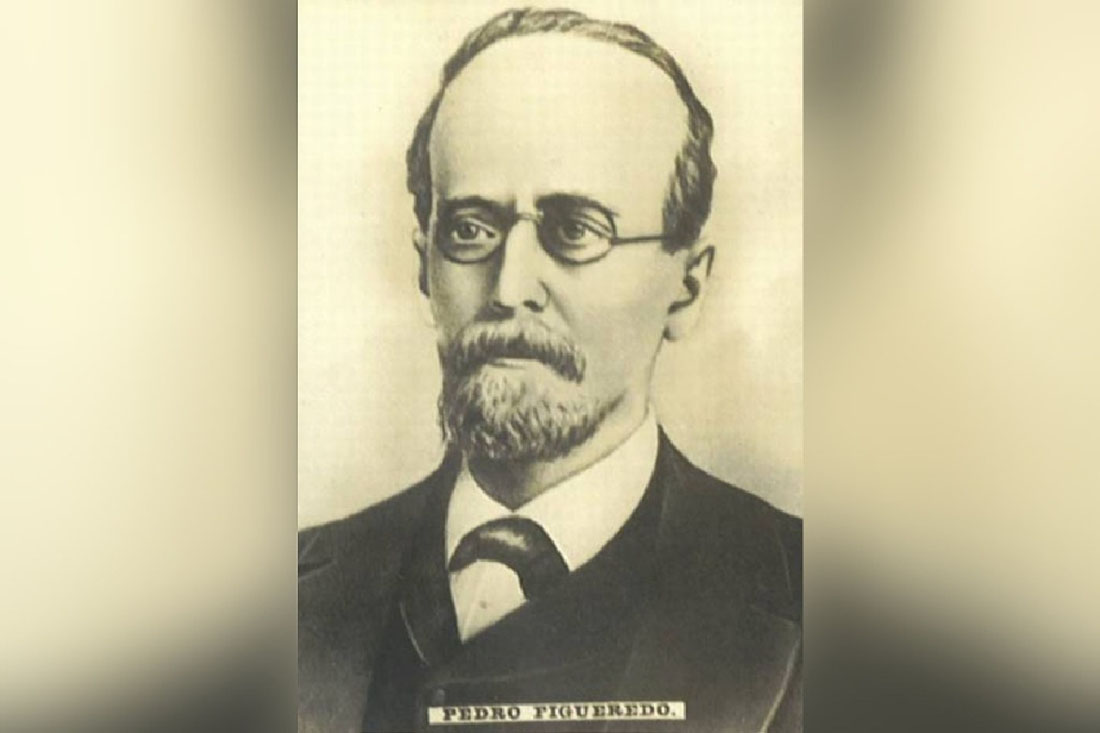On August 17th, 1870, Pedro (Perucho) Figueredo Cisneros, the author of La Bayamesa, our National Anthem, was shot in Santiago de Cuba by Spanish forces.
Arrest
Weak and ill with typhoid fever, Perucho Figueredo was found with ulcerated feet when he was captured by a small force led by the Lieutenant of the Santo Domingo reserves D. Juan Tejada. The capture of him turned out to be one of the most important actions of said campaign, due to his importance as head of the insurrection.
Death sentence
He arrives in Santiago de Cuba, aboard the gunboat Astuto, together with Rodrigo and Ignacio Tamayo, father and son; and they are immediately transferred to jail. Two days later, they initiated the Council of War presided over by Colonel Francisco Fernández Torrero, who would sentence him to death.
Figueredo, who knew of his worsening health condition, since he could barely walk, which is why he had to be led by two assistants; he asked, being a lawyer and having knowledge of the laws and the penalty that corresponded to him, the abbreviation of any exhibition in which he was immersed.
Likewise, he added that, with his death, he would not lose anything, but would only regret the fact that he could not see the triumph. In this way, he is accused of the crime of infidence and is sentenced to death, like Rodrigo and Ignacio.
With a peace agreement, in exchange for his life, an emissary from the Count of Valmaseda arrived. But Figueredo responded firmly by saying that there are propositions that are only made personally, in order to listen to the answer in the same way. Furthermore, he asked not to be disturbed in his last remaining moments.
Letter to his wife
That same day, hours later, the patriot requested a piece of paper and a pen to write a farewell letter to his beloved wife, Isabel Vázquez y Moreno, and a public notary to dictate his will. In said epistle, among other things, he asked her to try to live for her and for all their children. He also recommends the courage and resignation to face those plans.
Ignacio would also write an obituary to his spouse, Mrs. Agustina Milanés y Bazán. In it he expressed that he died as a man of honor.
His last words
Around 6:00 in the morning of August 17th, he entered the chapel where the prisoners were, the officer in charge of the execution, who would read them the sentence. As the independence newspaper El Demócrata, published in New York, in its issue of September 1st, 1870, stated, they remained silent while the priests prayed. They were handcuffed, but when Figueredo tried to take his first steps, with his feet totally lacerated and bloodied, he was unable to move forward.
When requesting a car to be able to move, the Chief of the escorts replied, that was too much honor for an insurrectionary chief, that a donkey would be brought to him. Once the steps were taken, he made his entry into the prison, and seeing him, he pronounced that he would not be the first redeemer to ride on one.
For the execution, they were taken to the mansion of the old slaughterhouse. Before being blindfolded, Rodrigo Tamayo looked at his son and extended his handcuffed hands with the aim of blessing him, while he lowered his head.
After hearing his orders, just before a uniform discharge was produced, with which the three patriots would fall dead, he would pronounce his last words: “To die for the country is to live.”
Bibliography
“Pedro Figueredo”, El Demócrata, Nueva York, jueves 1ro de septiembre de 1870, num.92, p.2.
Torres-Cuevas, Eduardo. Pedro Figueredo Cisneros: Simplemente, la muerte. www.cubadebate.cu, 20 octubre 2018.
Verdecia, José Maceo. Bayamo, edición anotada: Ludín Bernardo Fonseca García. Ediciones Bayamo, Bayamo, 2009.
Translated by: Aileen Álvarez García






